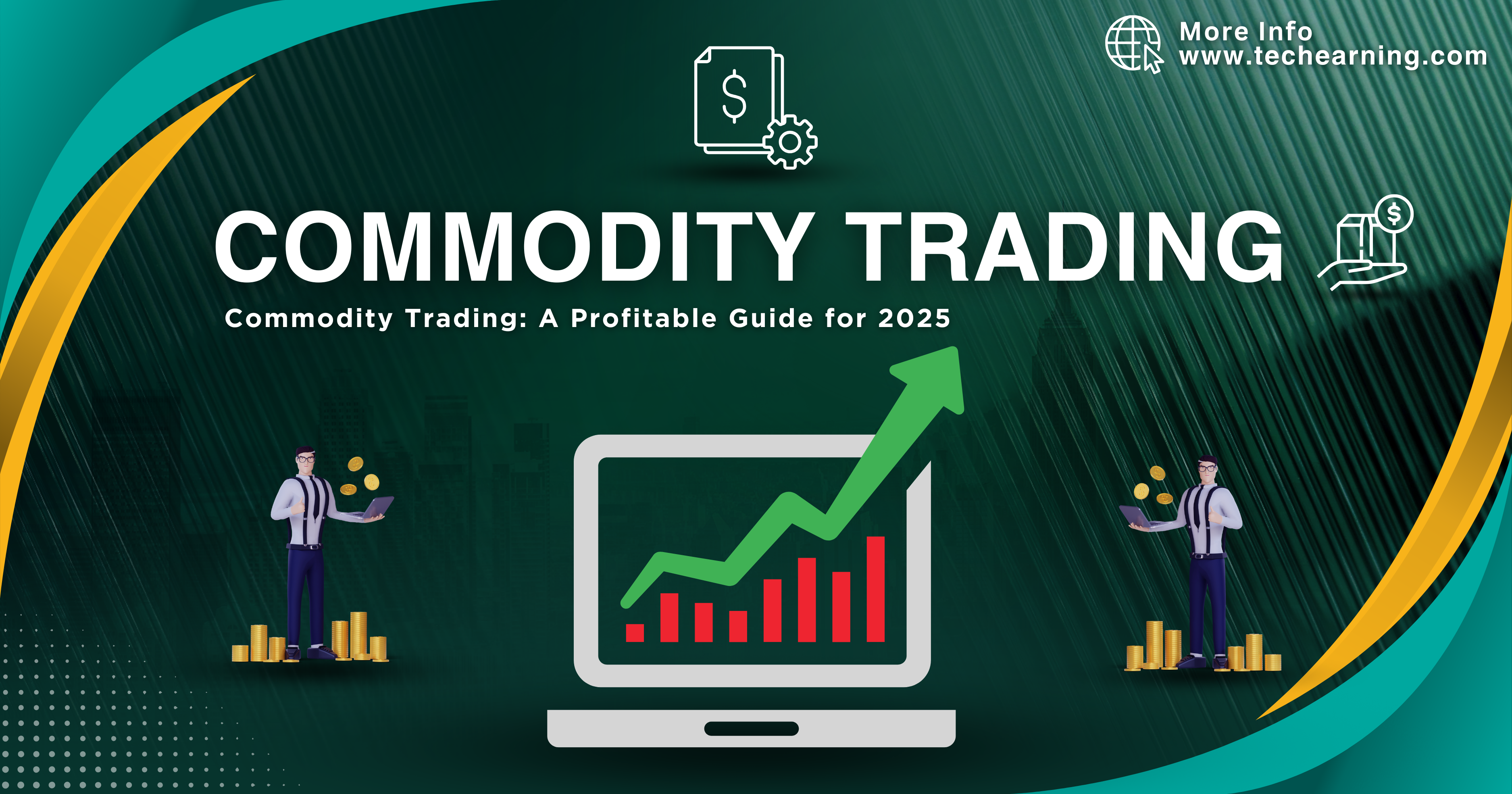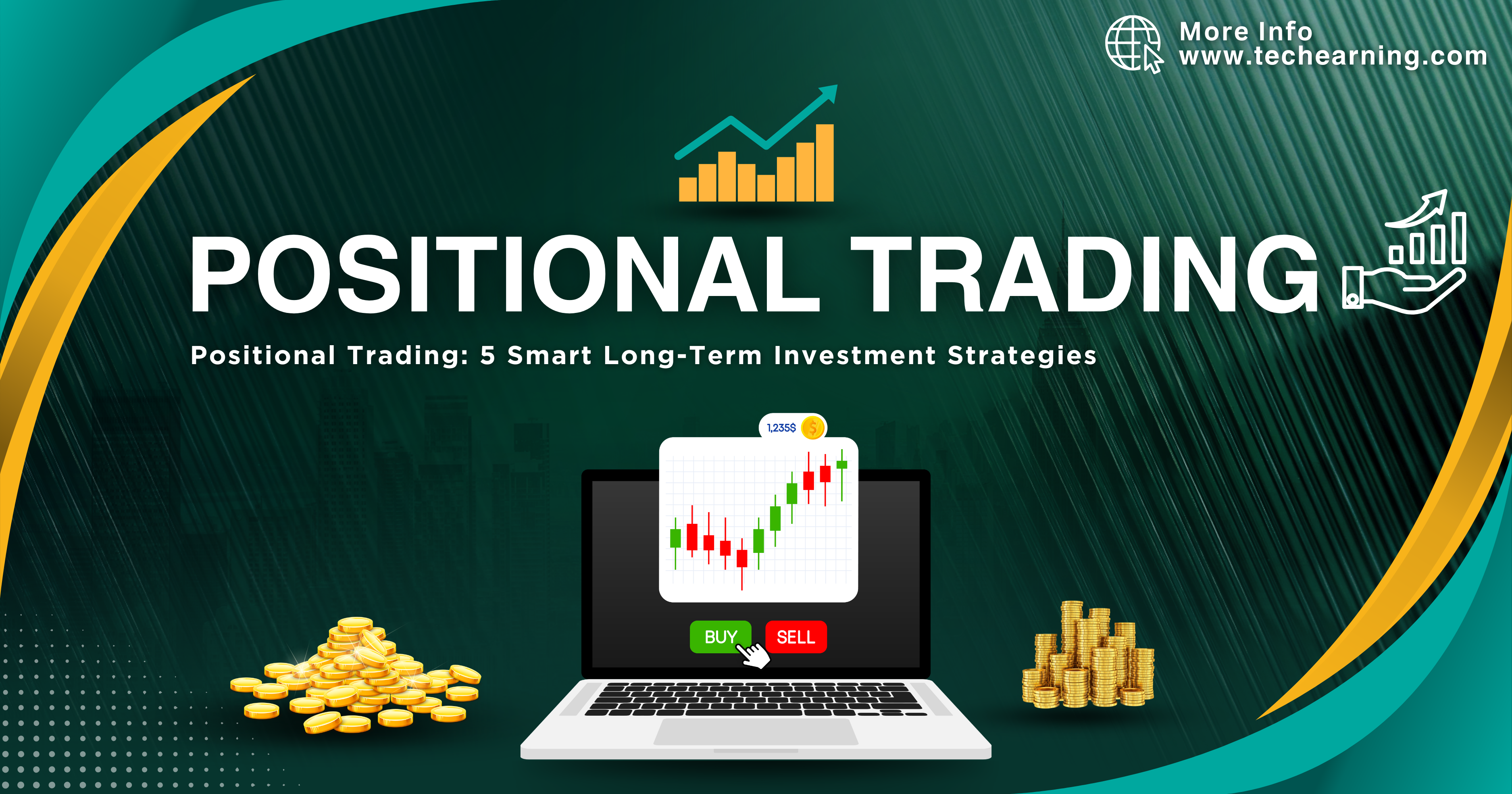TRADING
Candlestick Chart: A Powerful Tool for Traders in 2025
Introduction A candlestick chart is among the most effective tools for traders in technical analysis. It provides valuable insights into market trends, helping traders make informed decisions. Whether you are a beginner or an experienced investor, understanding candlestick patterns can significantly improve your trading strategy. What is a Candlestick Chart ? A candlestick chart is a type of financial chart used to describe price movements. It consists of individual candlesticks that represent a specific time frame, displaying the opening, closing, high, and low prices. Traders rely on these candlestick patterns to predict future market movements. History of Candlestick Charts Candlestick charting originated in Japan in the 18th century. Munehisa Homma, a rice trader, developed this technique to analyze price movements. Over time, Western traders adopted and refined these candlestick charts, making them a staple in modern technical analysis. Understanding Candlestick Components A single candlestick consists of: Common Candlestick Patterns Bullish Patterns Bearish Patterns How to Use Candlestick Patterns in Trading ? Identify Trends Candlestick patterns help traders recognize market trends. For example, multiple bullish Trading chartpatterns indicate a potential uptrend, while bearish Trading chart patterns signal a downtrend. Confirm Signals with Indicators Combine candlestick analysis with other indicators like Moving Averages (MA), Relative Strength Index (RSI), and Bollinger Bands for accurate predictions. Set Stop-Loss and Take-Profit Levels Using Technical chart patterns, traders can set stop-loss and take-profit levels, minimizing risks and maximizing profits. Volume Confirmation Always check trading volume along with candlestick patterns. A high volume during pattern formation strengthens the signal, making it more reliable. Time Frame Considerations Different time frames offer different interpretations. Day traders may focus on short-term Trading chartformations, while long-term investors analyze weekly or monthly patterns. Advantages of Candlestick Charts Candlestick Chart vs. Bar Chart While both charts provide price information, Trading chart offer better visual clarity. Bar charts show only price levels, whereas candlestick charts highlight price action and market psychology. Real-Life Application of Candlestick Analysis Stock Market Trading Many traders use candlestick charts to identify buy and sell signals in the stock market. For example, when a bullish engulfing Trading chart appears, traders may enter long positions. Forex Trading Forex traders rely on candlestick formations to determine currency pair movements. A hammer candlestick after a downtrend may indicate a buying opportunity. Cryptocurrency Trading Crypto traders analyze Trading chart formations to predict price fluctuations in Bitcoin, Ethereum, and other cryptocurrencies. Commodities and Futures Commodities traders use candlestick analysis to anticipate price trends in assets like gold, silver, and crude oil. Common Mistakes to Avoid in Candlestick Analysis Conclusion Candlestick charts are an essential tool for traders and investors. By mastering these candlestick patterns, you can enhance your trading strategies and improve decision-making. Whether you’re trading stocks, forex, or cryptocurrencies, incorporating Trading chart analysis into your strategy can lead to better results. For more trading tips and strategies, visit our Home Page.
Best Intraday Trading Course for Beginners in 2025
Introduction Intraday trading is one of the most exciting and rewarding ways to make money in the stock market. If you want to become a successful day trader, enrolling in a structured intraday trading course is essential. This article will guide you through the best courses available, their benefits, and how they can help you master the art of day trading. What is an Intraday Trading Course? An intraday trading course is a structured program designed to teach traders how to buy and sell stocks within the same day. These courses cover: Why Should You Take an Intraday Trading Course? Best Intraday Trading Courses in 2025 Stock Market Institute –Stock Market Institute NSE Academy – Certified Intraday Trader Program Udemy – Complete Intraday Trading Course for Beginners Certified Intraday Trader Program– Free Trading Course Trading Masterclass Successful Intraday Trading Key Features of a Good Intraday Trading Course When choosing an intraday trading course, look for: Who Should Enroll in an Intraday Trading Course? Advanced Intraday Trading Strategies Tips for Successful Intraday Trading Conclusion Enrolling in an intraday trading course is a smart move for anyone looking to master day trading. Whether you’re a beginner or an experienced trader, structured learning can significantly improve your success rate. Choose the right course that fits your learning style and start your journey towards profitable trading today! For more insights and expert guidance on stock trading and financial strategies, visit our Home Page and take the first step towards mastering the market!.
What is Cryptocurrency Trading ? (A Complete Guide for Beginners in 2025)
Introduction Cryptocurrency trading has become one of the most popular ways to invest and earn profits in the financial market. With the rise of Bitcoin, Ethereum, and thousands of altcoins, traders are constantly looking for ways to maximize their returns. But what exactly is cryptocurrency trading, and how does it work ? In this guide, we will break down everything you need to know, including trading strategies, risks, best platforms, and tips to succeed in 2025. What is Cryptocurrency Trading ? Cryptocurrency trading is the process of buying, selling, and exchanging digital currencies through various trading platforms. Unlike traditional stock markets, the crypto market operates 24/7, allowing traders to trade anytime without restrictions. Cryptocurrencies are digital assets that work on blockchain technology. The most well-known cryptocurrencies include Bitcoin (BTC), Ethereum (ETH), Binance Coin (BNB), and many more. The goal of cryptocurrency trading is to buy assets at a lower price and sell them at a higher price to generate profit. Key Features of Cryptocurrency Trading Types of Cryptocurrency Trading To become a successful crypto trader, it’s essential to understand different trading methods. Day Trading Swing Trading Scalping HODLing (Long-Term Investing) Best Platforms for Cryptocurrency Trading in 2025 Choosing the right platform is crucial for safe and efficient trading. Here are some of the best exchanges to consider. Risks in Cryptocurrency Trading While cryptocurrency trading offers significant profit opportunities, it also comes with risks. Here are some of the biggest challenges traders face. Market Volatility Cryptocurrency prices can change dramatically within minutes. Sudden price drops can lead to major losses if not managed properly. Security Risks Hackers often target crypto exchanges and wallets. Always use a secure wallet and enable two-factor authentication (2FA). Regulatory Uncertainty Governments worldwide have different regulations on cryptocurrencies. Sudden policy changes can impact the market significantly. Emotional Trading Many traders make impulsive decisions due to fear of missing out (FOMO) or panic selling. Having a solid strategy is essential to avoid emotional mistakes. Essential Tips for Successful Cryptocurrency Trading To increase your chances of success in cryptocurrency trading, follow these expert tips. Do Your Own Research (DYOR) Before investing, always research the project, its team, and market trends. Do not blindly follow hype or influencers. Use Stop-Loss Orders A stop-loss order automatically sells your asset if the price drops to a certain level, protecting you from major losses. Diversify Your Portfolio Do not invest all your money in a single cryptocurrency. Spread your investments across multiple assets to reduce risk. Stay Updated with Market Trends Follow cryptocurrency news, updates, and technical analysis to stay ahead of market movements. Avoid Trading with Emotions Stick to a well-defined trading strategy and avoid making impulsive decisions based on fear or greed. How to Start Cryptocurrency Trading ? If you are new to cryptocurrency trading, here’s a simple step-by-step guide to help you get started. Future of Cryptocurrency Trading in 2025 The crypto industry is evolving rapidly, with new technologies and regulations shaping the future. Here are some key trends expected in 2025. Conclusion Cryptocurrency trading is an exciting and profitable market, but it comes with risks that traders must understand. By learning different trading strategies, managing risks, and staying updated with market trends, you can increase your chances of success. If you are planning to start cryptocurrency trading in 2025, choose a reliable platform, use smart trading techniques, and always trade responsibly. For more insights on cryptocurrency trading, digital marketing, and online earnings, visit our Home Page .
Commodity Trading: A Profitable Guide for 2025
Introduction Commodity trading is one of the oldest forms of trading in the world, providing investors with an opportunity to trade essential goods such as metals, energy, and agricultural products. In 2025, commodity markets have become more accessible with online platforms, allowing traders to benefit from price fluctuations. In this article, we will explore the concept of commodity trading, its types, benefits, risks, and how you can start trading profitably. Understanding Commodity Trading Commodity trading refers to the buying and selling of physical goods or their derivatives in organized markets. These commodities are broadly classified into two categories: This type of trading can be conducted through futures contracts, spot trading, and options trading, allowing traders to speculate on price movements and hedge against inflation. Why is Commodity Trading Important ? Commodity markets play a crucial role in the global economy. They help in price discovery, risk management, and provide liquidity. Investors and businesses use commodity investments as a hedge against inflation and currency fluctuations. How Does the Trading Process Work ? The process of trading commodities involves several steps: Types of Commodity Markets Commodity investments take place in different types of markets: Benefits of Investing in Commodities Risks in Commodity Markets How to Start Commodity Investments ? If you want to start investing in commodities, follow these steps: Best Commodities to Trade in 2025 If you are looking for top commodities to invest in 2025, consider the following: Conclusion Commodity investments offer a lucrative opportunity for investors who understand market trends and risk management strategies. By leveraging the right tools and knowledge, you can maximize your profits while minimizing risks. Whether you are a beginner or an experienced investor, the commodity market provides numerous opportunities for financial growth in 2025. Internal Link To learn more about digital marketing strategies that can help grow your online trading business, visit our Home Page.
Forex Trading Guide: Top 10 Benefits & Strategies for 2025
Introduction Forex Trading is one of the largest and most liquid financial markets in the world, with a daily trading volume of over $7 trillion. It offers traders the opportunity to profit from currency price fluctuations. Whether you are a beginner or an experienced investor, understanding Forex Trading is crucial to making informed decisions and maximizing your profits. In this article, we will explore what Forex Trading is, how it works, and why it is one of the best investment opportunities in 2025. What is Forex Trading ? Forex Trading, also known as foreign exchange trading or currency trading, is the process of exchanging one currency for another to make a profit. It operates through a decentralized global network where transactions happen electronically between banks, brokers, and traders. How Does Forex Trading Work ? Global Currency Market is based on currency pairs, where one currency is exchanged for another. The most commonly traded currency pairs include: Traders speculate on whether a currency’s value will rise or fall compared to another currency. If they expect a currency to increase in value, they buy it. If they expect it to decrease, they sell it. 10 Powerful Benefits of Forex Trading 24/5 Market Availability Unlike the stock market, which has fixed trading hours, the Forex market operates 24 hours a day, five days a week. This allows traders worldwide to participate at any time. High Liquidity Forex Trading is the most liquid financial market in the world. High liquidity means you can buy and sell currencies instantly without significant price fluctuations. Low Transaction Costs Most Forex brokers charge minimal commissions and spreads, making Forex Trading more cost-effective than stock trading. Leverage for Bigger Profits Forex brokers offer leverage, which allows traders to control large positions with a small investment. For example, with a 1:100 leverage, you can trade $10,000 with just $100. Flexibility in Trading Strategies Forex Trading offers various trading strategies, including: Easy Market Access With just a computer, smartphone, and internet connection, anyone can start Online Currency Exchange from anywhere in the world. Potential for High Profits Since the Forex market is volatile, traders can make significant profits in a short time. However, this also comes with risks. No Middlemen Unlike stock markets, Forex Trading does not require brokers or intermediaries, allowing for direct transactions between buyers and sellers. Diverse Trading Options Traders can invest in various currency pairs, commodities, and indices to diversify their portfolio and minimize risks. Opportunities in Both Rising and Falling Markets In Forex Trading, you can profit in both bullish and bearish markets by either buying (going long) or selling (going short). Key Concepts in Forex Trading Pips and Spreads A pip is the smallest price movement in Forex, while the spread is the difference between the buying and selling price. Margin and Leverage Risk Management To succeed in Forex Trading, it’s essential to implement risk management strategies: Risks of Forex Trading While Forex Trading is profitable, it comes with risks: How to Start Forex Trading in 2025 Choose a Reputable Forex Broker Select a broker that is regulated, reliable, and offers low spreads. Some popular brokers are: Open a Trading Account Register with your broker, complete the KYC process, and deposit funds. Many brokers offer free demo accounts for beginners. Learn Technical and Fundamental Analysis Use technical indicators like Moving Averages, RSI, MACD, and Bollinger Bands to analyze trends. Also, follow economic news and global events that impact currency values. Practice on a Demo Account Before trading with real money, practice on a demo account to understand market movements and trading strategies. Develop a Trading Plan A solid trading plan includes: Forex Trading vs. Stock Trading Feature Forex Trading Stock Trading Market Hours 24/5 Limited Liquidity High Moderate Leverage High Low Transaction Costs Low Higher Volatility High Moderate Conclusion Forex Trading is an exciting and profitable investment opportunity, but it requires knowledge, discipline, and strategy. Whether you are a beginner or an expert, continuous learning is essential for success in the Forex market. For more insights on trading and investment strategies, visit our Home Page for expert guidance and in-depth resources.
Top 5 Reasons Why Algorithmic Trading Can Skyrocket Your Profits
Introduction Algorithmic Trading, also known as Algo Trading or Automated Trading, is revolutionizing financial markets. It involves using computer programs to execute trades at lightning speed based on pre-set conditions. Whether you’re a beginner or an experienced trader, understanding Algorithmic Trading can significantly enhance your investment strategies. What is Algorithmic Trading ? Algorithmic Trading is a method of executing trades using computer algorithms that follow specific instructions. These algorithms analyze market data, identify profitable opportunities, and execute trades without human intervention. The goal is to enhance efficiency, reduce errors, and optimize trade execution speed. Why is Algorithmic Trading Important ? How Algorithmic Trading Works Algo Trading System uses mathematical models and statistical analysis to scan the market for profitable opportunities. The steps involved include: Key Components of Algorithmic Trading Types of Algorithmic Trading Strategies Tools & Platforms for Algorithmic Trading Challenges & Risks of Algorithmic Trading How to Get Started with Algorithmic Trading ? Future of Algorithmic Trading Algorithmic Trading is expected to grow exponentially in the coming years. With advancements in artificial intelligence, big data analytics, and blockchain technology, trading algorithms are becoming more sophisticated. Some future trends include: Conclusion Algorithmic Trading is a game-changer for traders who want to leverage technology for maximum efficiency and profitability. With the right knowledge, tools, and strategy, anyone can enter the world of automated trading and achieve financial success. By understanding the fundamentals, testing strategies, and continuously optimizing them, traders can stay ahead in the competitive financial markets. For more insights on trading and digital marketing, visit our Home Page.
Options Trading 2025: Best Strategies to Make Money
What is Options Trading ? A Beginner’s Guide for 2025 In the world of financial markets, Options Trading is emerging as a highly profitable and strategic investment tool. If you are looking for a way to maximize returns while managing risks effectively, options trading can be an excellent choice. In this article, we will explore what is Options Trading, how it works, its benefits, and essential tips for beginners. What is Options Trading ? Options Trading is a type of derivative trading where investors buy and sell contracts that give them the right (but not the obligation) to buy or sell an underlying asset at a predetermined price within a specific time frame. These contracts are called options, and they can be used for hedging, speculation, or generating income. There are two main types of options: How Does Options Trading Work ? To understand Options Trading, let’s break it down into simple steps: Benefits of Options Trading Common Options Trading Strategies Risks Involved in Options Trading While Options Trading offers great opportunities, it also has risks: How to Start Options Trading in India ? Final Thoughts Options Trading is a versatile and strategic way to earn profits in the stock market. By understanding how it works, using effective strategies, and managing risks, you can take advantage of this powerful investment tool. However, beginners should start slow, educate themselves, and practice before making significant trades. If you want to learn more about digital marketing, video editing, and trading, visit our home page for insightful content!
5 Powerful Strategies for Momentum Trading to Maximize Your Profits
What is Momentum Trading ? Momentum Trading is a popular trading strategy used by traders to capitalize on strong price movements in the market. This technique involves buying assets that are trending upwards and selling those that are trending downwards. The idea is to ride the momentum until signs of a reversal appear. Unlike traditional investing, where traders focus on fundamentals like company earnings and valuation, Momentum Trading primarily relies on technical indicators and market trends. Traders look for assets experiencing significant movement, often due to market sentiment, economic news, or earnings reports. In this article, we will explore the fundamentals of Momentum Trading, the best strategies, and tips to maximize your profits while managing risks effectively. How Does Momentum Trading Work ? Momentum Trading is based on the principle that assets in motion tend to stay in motion. Traders identify stocks, forex pairs, or cryptocurrencies that show strong price action and high trading volumes. The goal is to enter trades at the right time and exit before the trend reverses. Key Factors Influencing Momentum Trading: 5 Best Strategies for Momentum Trading Here are the top strategies that can help you become a successful momentum trader: Breakout Trading Strategy Breakout trading involves entering a trade when the price breaks above a resistance level or below a support level with high volume. This strategy is highly effective when combined with strong momentum indicators. Key Points: Moving Average Crossover Strategy This strategy uses two moving averages (short-term and long-term). When the short-term moving average crosses above the long-term moving average, it signals a buy opportunity. When it crosses below, it signals a sell. Key Points: Relative Strength Index (RSI) Strategy The RSI indicator helps traders determine overbought and oversold conditions. An RSI above 70 indicates overbought conditions (sell signal), while an RSI below 30 indicates oversold conditions (buy signal). Key Points: MACD Strategy The Moving Average Convergence Divergence (MACD) indicator is a powerful tool in Momentum Trading. When the MACD line crosses above the signal line, it indicates a bullish trend. When it crosses below, it signals a bearish trend. Key Points: News-Based Momentum Trading Market-moving news and economic events create significant price momentum. Traders monitor financial news and enter trades based on positive or negative sentiment. Key Points: Common Mistakes in Momentum Trading Many traders make mistakes while attempting to trade momentum. Here are some of the most common pitfalls and how to avoid them: Risk Management in Momentum Trading Momentum Trading can be highly profitable, but it also comes with risks. Here are some essential risk management tips: Conclusion Momentum Trading is an exciting and rewarding trading strategy that allows traders to capitalize on strong price trends. By using the right strategies, technical indicators, and risk management techniques, you can increase your chances of success in the market. If you’re serious about learning more trading techniques and digital marketing strategies, visit our Home Page for valuable resources and expert insights. This guide provides a solid foundation for anyone interested in Momentum Trading. Whether you are a beginner or an experienced trader, applying these strategies with discipline and patience can significantly enhance your trading success.
Scalping Strategy: The Ultimate Guide to Fast Profits in 2025
Scalping: The Fastest Way to Trade and Earn Profits Short-term trading is one of the most dynamic and rapid trading strategies that traders use to take advantage of small price movements. Unlike traditional trading methods, where positions are held for hours, days, or even months, scalping involves executing multiple trades within minutes or even seconds. This technique is widely used in forex, stock, and cryptocurrency markets to generate quick and consistent profits. In this guide, we will explore what scalping is, how it works, the best scalping strategies, and how traders can minimize risks while maximizing profits. What is Scalping ? Scalping is a trading approach where traders execute numerous trades within a short timeframe, capitalizing on minor price fluctuations. The goal is to accumulate small but frequent gains rather than holding positions for large profits over an extended period. Key Characteristics of Scalping: How Does Scalping Work ? High-frequency trading works by leveraging short-term price changes in a highly liquid market. Traders use technical analysis and various indicators to identify quick entry and exit points. Steps to Execute a Scalping Trade: Best Scalping Strategies for 2025 Moving Average Crossover Strategy This strategy involves using short-term moving averages (5-period and 15-period) to identify trend direction. A buy signal is generated when the shorter moving average crosses above the longer moving average, and a sell signal is triggered when it crosses below. Bollinger Bands Strategy Scalpers use Bollinger Bands to determine price volatility. A common approach is to buy at the lower band and sell at the upper band when the price is in a ranging market. RSI Overbought & Oversold Levels When the RSI (Relative Strength Index) falls below 30, it indicates an oversold market, making it a potential buying opportunity. Conversely, when RSI exceeds 70, it signals an overbought market, suggesting a sell opportunity. One-Minute Scalping Strategy This is a popular forex Short-term trading technique where traders use 1-minute charts, looking for quick price movements and using indicators like EMA (Exponential Moving Average) to confirm trends. Level 2 Market Data Analysis By analyzing the order book (Level 2 market data), scalpers predict short-term price movements based on bid and ask volumes. Best Markets for Scalping High-frequency trading is most effective in markets with high liquidity and tight spreads. The best markets for High-frequency trading include: Pros and Cons of Scalping Advantages of Scalping: Disadvantages of Scalping: Risk Management in Scalping Due to the high volume of trades, risk management is crucial for Quick trading strategy . Here are some risk-reduction techniques: Is Scalping Right for You ? Scalping is suitable for traders who: However, if you prefer a less intense trading style, swing trading or long-term investing might be better options. Conclusion Quick trading strategy is an exciting and fast-paced trading strategy that offers traders an opportunity to make quick profits. By using the right strategies, technical indicators, and proper risk management, traders can enhance their chances of success. Whether you are trading forex, stocks, or cryptocurrencies, Quick trading strategy requires discipline, patience, and a deep understanding of market dynamics. To learn more about trading strategies, digital marketing, and online earning methods, visit our Home Page for expert insights!
Positional Trading: 5 Smart Long-Term Investment Strategies
Introduction In today’s time, there are multiple ways to earn in the stock market, and one of them is Positional trading. If you want to avoid short-term fluctuations and earn steady profits, this strategy can be ideal for you. Positional trading is a method where traders hold a stock for several days, weeks, or even months. In this article, we will understand what positional trading is, how it works, its benefits, risks, and the best strategies to become a successful positional trader. What is Positional Trading ? Positional trading is a strategy where traders hold a stock or asset for the long term. This strategy is based on technical and fundamental analysis, where traders maintain their position without being affected by short-term price movements. The main objective is to earn significant profits based on long-term market trends. Unlike day trading and swing trading, positional trading focuses on large price movements over an extended period. Traders use a mix of fundamental and technical indicators to identify the right stocks that have the potential for growth. How Does Positional Trading Work ? Benefits of Positional Trading Risk Factors in Positional Trading Best Strategies for Positional Trading Moving Average Strategy Using 50-day and 200-day moving averages to confirm trends. If the 50-day moving average moves above the 200-day moving average, it indicates a buy signal. Breakout Trading Strategy If a stock breaks above its resistance level, it generates a strong buy signal. Fundamental Growth Stocks Investing in companies with strong long-term growth potential, such as those with high ROE (Return on Equity) and ROCE (Return on Capital Employed). Sectoral Trend Analysis Investing in leading stocks within a sector that shows strong growth trends. Support and Resistance Trading Identifying key support and resistance levels to make strategic entry and exit decisions. News-Based Trading Strategy Following news updates related to specific industries or companies to make informed trading decisions. Earnings Reports and Financial Statements Investors closely monitor company earnings reports and financial statements to choose stocks with strong fundamentals. Dividend Growth Strategy Investing in companies that consistently pay dividends and show growth potential. How to Become a Successful Positional Trader ? Conclusion Positional trading is a long-term investment strategy based on patience and analysis. If you understand market trends and trade accordingly, you can earn good profits in the long run. Discipline and research are crucial for success in trading. By following effective strategies and maintaining risk management, traders can maximize their returns. If you are new to trading, start with small investments and gain experience before committing a large portion of your capital. Learning continuously and staying updated with market conditions will help you become a successful positional trader. If you want to learn more about digital marketing and online earnings, visit our Home Page !









